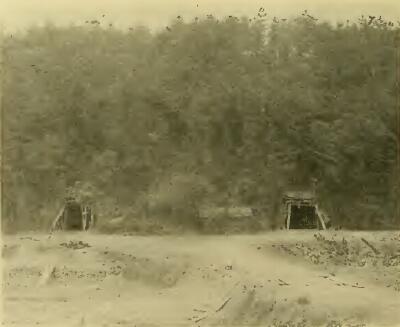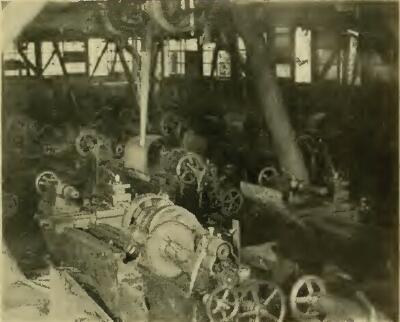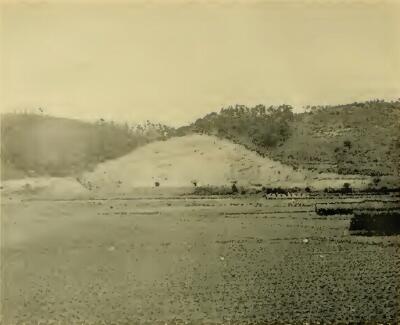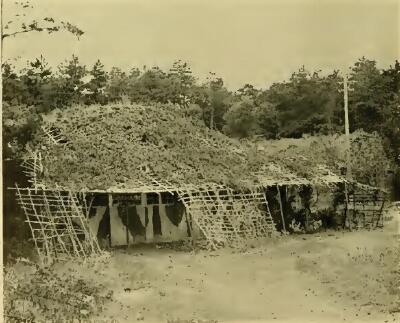Kyushu Airplane Company
(Kyushu
Hikoki K K)
Corporation Report
Aircraft Division
February
1947
- The following is from the
records of the United States Strategic Bombing Survey
(Pacific). PDF original may be found at http://www.archive.org under
"United States Strategic Bombing Survey."
- Click on
images for enlarged
view. Images can be downloaded and used in an image editor to adjust
contrast and/or brightness for better clarity.
THE UNITED STATES
STRATEGIC BOMBING SURVEY
Kyushu Airplane Company
(Kyushu
Hikoki KK)
CORPORATION REPORT NO. XV
(Airframes)
Aircraft
Division
Dates of Survey: 13-15 November 1945
Date
of Publication: February 1947
TABLE
OF CONTENTS
The Corporation and Its
Importance
in the Aircraft Industry
The Air Attacks
Production
Statistics
Evaluation
of
Pre-attack Intelligence
Appendix
A—Layout of the Zasshonokuma Plant
Appendix B—Layout of the
Kashii
Plant
Appendix
C—Layout of the Itazuke Plant
Appendix
D—Organizational Table of the Kyushu Airplane Co.
Appendix E—Component Flow
to Final Assembly of the Four Types of Aircraft Manufactured During 1945
Appendix
F—Graph of Employee and Manhour Trends
Appendix
G—Indirect, Direct and Total Manhours Worked
Appendix H—List of Dispersal
Locations
Appendix
I—Map of Dispersed Sites
Appendix J—Table of Ordered
and
Actual Production
Appendix K—Graph of
Ordered and Actual Production
Appendix
L—Comparison of MIS Estimates with Actual Production
THE
CORPORATION
AND ITS IMPORTANCE IN THE AIRCRAFT INDUSTRY
Introduction
The
Kyushu Airplane Co. (Kyushu Hikoki K K) was a
significant producer of naval trainer aircraft and the foremost
aircraft manufacturer on the island of Kyushu. During 1943 this firm
produced about 12 percent of the total output of naval trainers but
only three percent of the total combat planes. With the production of
the Type O reconnaissance seaplane, Jake, in 1941, Kyushu Airplane Co.,
then known as the Watanabe Ironworks Ltd (Watanabe Tekkosho K K),
started assembling combat aircraft. Production of another combat type,
the Tokai patrol bomber, Lorna, began in September 1943. Subsequently,
in June 1945 Kyushu completed the development of the first of a new
pusher-type naval fighter, Shinden. Only one aircraft of this type was
completed prior to the cessation of hostilities. Plans to produce the
twinjet aircraft, Kikka, were never fulfilled and no models of this
Nakajima-designed aircraft were ever produced by Kyushu.
As
a producer of aircraft landing-wheel units, Kyushu was second only to
the firm of Okamoto Industries Ltd (Okamoto Kogyo K K).
Wheels manufactured by Kyushu were delivered to all the principal
producers of naval aircraft including Mitsubishi, Nakajima, Kawanishi,
Aichi and Hitachi.
Prior to the formation of the
Kyushu company in 1943, this concern was known as the Watanabe
Ironworks. It was founded in 1886 by Fukuo Watanabe. In 1919 this firm
commenced the manufacture of torpedo tubes and parts for the Imperial
Japanese Navy at its plant at Chiyomachi near Higashi park in the town
of Fukuoka.
Watanabe anticipated the future
importance of the aircraft industry. Realizing that there was no
aircraft-manufacturing activity on the island of Kyushu other than the
small-scale production then taking place at the Sasebo naval arsenal,
he became determined to start aircraft manufacture in a section of his
ironworks. During the early 1920s, when Watanabe started making plans
for aircraft manufacture, funds were not available for the anticipated
assembly of complete airplanes, so the manufacture of aircraft landing
wheels was decided upon as a logical beginning.
Although
Watanabe's previous connections had been almost entirely with the
Japanese Navy, the Army was the first to place orders for the
manufacture of landing wheels. The Navy soon followed suit, however,
and finally, realizing his closer associations with this service,
Watanabe in 1926 sought orders for the manufacture of complete aircraft
with the Naval Air Headquarters. Despite repeated attempts, orders were
not forthcoming until 1929 when Admiral Ando, then the chief of Naval
Air Headquarters, offered the Navy's full cooperation in establishing a
new plant in which Watanabe was to manufacture aircraft for the Navy.
The site chosen for the new plant was at Zasshonokuma on the
southeastern outskirts of Fukuoka.
Difficulties
encountered in the construction and operation of the new plant were
overcome with the help of the Navy which supplied engineers and
technical specialists. Furthermore, limited numbers of Watanabe
personnel were trained in aircraft production techniques at the Sasebo
naval arsenal which was then the only naval arsenal in the area engaged
in aircraft production.
Construction of the
Zasshonokuma plant (Appendix A)
was completed late in 1930, and production started in 1931. A new
Watanabe ordnance plant was built adjacent to the Zasshonokuma aircraft
plant and ordnance manufacture, on a larger scale than previously, was
commenced at this new site in 1934.
By 1940, the
site of the Zasshonokuma plant had been fully built up, and in order to
accommodate additional expansion, the acquisition of more land and the
construction of further plants was envisaged. In 1941, the Kashii plant
(Appendix B) was
constructed on reclaimed land to the northeast of Fukuoka, and in the
following year, landing-wheel manufacture was transferred from
Zasshonokuma to a newly constructed plant at Itazuke (Appendix C) , one mile north of
Zasshonokuma.
By 1943, both the aircraft and
ordnance divisions of Watanabe had grown to such proportions that it
was decided to create two distinct organizations. Watanabe remained as
president of both, and the personnel were allotted with respect to
their previous activity in the manufacture either of aircraft or naval
ordnance. In October 1943. therefore, the Kyushu Ordnance Co. (Kyushu
Heiki K K) and the Kyushu Airplane Co. were established.
During
1944, lesser plants of Kyushu Airplane were constructed at Setaka, 35
miles south of Fukuoka, and Karatsu, 30 miles west-southwest of Fukuoka
(Fig. 1).
Another
small plant was built at Meinohama, 5 miles west of Fukuoka, in 1945.
The Kyushu Airplane Co.'s manufacturing facilities (Table 1) therefore,
consisted of two aircraft-assembly plants, one landing-wheel plant, and
three lesser parts plants.
The
Army, Navy and Munitions Ministry did not exercise a strong influence
over Kyushu, whose failure to meet production orders did not arouse
criticism or stricter control. A parallel may be drawn with Japan
International Aircraft Industries, Ltd (Nippon Kokusai Koku
Kogyo K K), another firm of secondary standing engaged
largely in the manufacture of trainers for the Army, and whose low
output was never a matter of concern to the officials of the Munitions
Ministry.
Other than naval assistance in the
construction of the plant and the training of skilled workers, only one
instance is known in which the Navy rendered direct assistance to
Kyushu. This was in the designing of the pusher-type aircraft, Shinden,
in which case a naval aeronautical engineer who had a mania for, and
specialized in the design of 'ente' (duck)-type aircraft, was directed
by the First Naval Air Technical Depot at Yokosuka to supervise the
designing of Shinden at the Zasshonokuma plant.
Financial
control of Kyushu was exercised principally by the Sumitomo Metal
Industries Ltd (Sumitomo Kinzoku Kogyo K K) , and
the Watanabe family and friends. Each of these groups owned about 40
percent of the shares while the remaining 20 percent were privately
owned. No subsidies were ever received by Kyushu from the government,
and no direct supervision other than the inspection of finished
products was exercised by the Navy.
Early in
1945 the Munitions Ministry allotted secret code numbers to all
aircraft plants in Japan. Under this system, the various divisions of
the Kyushu Airplane Co. received designations as follows:
Headquarters
department -- No. 1030
Zasshonokuma plant -- No. 1031
Kashii
plant -- No. 1032
Itazuke plant -- No. 1033
Organization
and Operation
The three principal
plants of the Kyushu Airplane Co. were under the administrative control
of a headquarters department located at the Zasshonokuma plant
(Appendix D).
This headquarters department
controlled activities of its six departments through the direction of
the president, Fukuo Watanabe, the vice-president, Z. Yamamoto, the
managing director, K. Ozaki, and a board of five directors and three
auditors. These six departments were responsible for general affairs,
personal affairs, accounting, materiel, training and medical activities
of the whole firm. The branch offices and agencies of Kyushu in Tokyo,
Osaka, Nagoya, Hiroshima, Omura, and Fusan were also under the control
of this headquarters.
The general affairs,
planning, designing and production departments of the Zasshonokuma
plant were under the control of S. Yamanari, the plant manager.
Similarly, the general affairs, training, planning and production
departments of the Kashii plant were under the jurisdiction of M.
Matsuo. The Itazuke plant, relatively smaller than either of the
above-mentioned units, and engaged only in the production of landing
wheels, was divided into general affairs, planning and production
departments under the direction of the plant manager, M. Yamada.
Production-flow
charts for the four aircraft types being assembled by Kyushu Airplane
during 1945 (Appendix E)
show that with very few exceptions all subcontractors and parts
suppliers were located on the island of Kyushu.
As
the Kyushu Airplane Co. had for many decades been well established in
the Kyushu area, it had organized a reasonably effective group of
subcontractors in the immediate vicinity of its assembly plants. The
supply of components, therefore, was not such a limiting factor as was
the case with the more recently established Mitsubishi No. 7 airframe
works at Kumamoto. As an example, Kanegafuchi's spinning mill in
Fukuoka city manufactured Shiragiku fuselages under subcontract to the
Kyushu Airplane Co.
Owing to the lack of impetus
and the relatively small volume of production at all the plants of
Kyushu, the production techniques were almost without exception the
"job shop" variety.
Although the population in
the Fukuoka area more than fulfilled the demands of Kyushu for
unskilled labor, the lack of technicians, specialists and skilled
workers was considered a significant limitation to the achievement of
maximum output. Total employment at the Kyushu Co.'s plants rose
steadily from 5,000 in April 1939 to 17,000 in the middle of 1943
(Appendix F). A small drop in employment is evident towards the end of
1943, due to the conscription of a group of men for service in the
Japanese armed forces. During 1944, however, employment rose rapidly
again, and with the utilization of student labor and soldier employees
in April and July 1944, respectively, employment reached its height in
February 1945, with a total of almost 27,000 laborers. Many of the
students were forced to return to their schools during May and June
1945, causing a sharp drop. At the conclusion of hostilities, 20,000
people were in the employ of the Kyushu Airplane Co. and by October
1945, the figure had dropped to 1,664.
Although
man-hour figures (Appendix G), indicate that the effort was almost
equally divided between direct and indirect labor, officials stated
that 60 percent of all regular employees, all of the soldiers, and 75
percent of the students were utilized in direct-production departments
of the company.
A two-shift system was utilized
in all the plants and departments of the company. The hours of the day
shift were from 0730 to 1845 hours and of the night shift, from 1845 to
0730 hours. Personnel on shifts were reversed each Sunday.
With
the exception of January 1942, during which month the labor turnover
was particularly high, the average ratio of new employees hired during
the month to the total number of employees at the beginning of that
month was 1:34 for the years 1942 and 1943. This ratio was maintained
throughout 1944, with the exception of April and October of that year,
during which two months an unusually large number of students was hired
to replace men conscripted for military service. During the first eight
months of 1945 the turnover was small, the average ratio for this
period being 1:74.
During the months immediately
following December 1944. approximately 4.500 workers, or 50 per cent of
the total available skilled-labor force, was conscripted by the Army
and Navy. The firm was powerless to prevent this continual drain on
irreplaceable manpower, and the resulting effect on production was
considerable.
Appended Plant Reports
Although
all the plants of the Kyushu Co., with the exception of the Setaka
plant, were investigated by members of the Kyushu field team of the
Aircraft Division, it was considered that their size and significance
was not sufficient to justify the preparation of any individual plant
reports. All the information supplied by company officials and obtained
from investigations by survey personnel has therefore been included in
this corporation report.
The Dispersal
Program
Plant officials of the Kyushu
Airplane Co. realized the threat of air attacks, and planned to take
action in December 1944. In that month, a preliminary dispersal program
was instituted, and in addition to the movement of equipment and
personnel to available sites in the Fukuoka area, buildings were
removed from the Zasshonokuma plant, and the construction of more
permanent dispersal sites, both above and underground, was started.
This
plan was put into effect during the first quarter of 1945. Due to the
destruction by air attack of aircraft-manufacturing and air-depot
facilities at Tachiarai (20 miles SE of Fukuoka) on 1 April 1945, the
government ordered the Kyushu Airplane Co. to expedite the completion
of its dispersal program and to modify the plan so as to make it as
extensive as possible and to effect the dispersal of all vital
machinery and essential activity.
Of the 29
principal dispersal groups to which activity was transferred (Appendix H), seven were located
in schools, five partly or wholly underground; one was a forest
dispersal; and the remainder were housed in newly constructed
installations, warehouses, public halls, or any other enclosed site
with the requisite floor area (photos 1-4).
 Photo 1. Entrances to
underground machine shops of the
Photo 1. Entrances to
underground machine shops of the
Kashii-miya dispersal
group.
The decrease in
output from 133 aircraft in December 1944 to 76 aircraft in January
1945, and the further drop to 26 in April 1945 is indicative of the
sacrifices in production that were made in order to achieve maximum
dispersal.
With one exception, all dispersal was
effected within a radius of 10 miles of the parent plant (Appendix I). In this way
difficulties encountered in the transportation of supplies and workers
were kept at a minimum.
 Photo 2. Dispersal from
the Itazuke plant; machine shop located in
Photo 2. Dispersal from
the Itazuke plant; machine shop located in
forest near
Ohashi. Note trees growing through center of building.
 Photo 3. Dispersal of the
Kashii plant to Wajiro showing
Photo 3. Dispersal of the
Kashii plant to Wajiro showing
five of about 15 entrances
to incompleted tunnels. (Example of complex tunnel system at the Nakajima Aircraft Co., Yusenji, Tokyo.)
 Photo
4. Dispersal of the Kashii plant to Wajiro showing two of a group of
six hangar-type structures camouflaged with bamboo lattice-work and
brush.
Photo
4. Dispersal of the Kashii plant to Wajiro showing two of a group of
six hangar-type structures camouflaged with bamboo lattice-work and
brush.
THE AIR
ATTACKS
Air
Attack on Plants
None of the plants of
the Kyushu Airplane Co. was ever the target of, or damaged by, air
attack.
Air Attacks on Urban Areas
The
Fukuoka urban area was attacked on 19 June 1945. Although 20 percent of
the built-up area was destroyed as a result of this raid, company
officials stated that minor dislocation in the transportation of
workers existed for only one day subsequent to the raid. Effects on
production were negligible.
PRODUCTION
STATISTICS
A
tabulation of production data (Appendix
J) shows that between April 1942 and August 1945, the company
produced only 2,418 planes or 53 percent of the 4,517 aircraft ordered
from it by the Munitions Ministry. This low output placed the firm
among the secondary aircraft manufacturers, and it is known that the
government made little or no attempt to spur the firm on to greater
efforts.
Prior to 1939, output consisted almost
completely of trainer aircraft, these being produced in relatively
small numbers. By 1941, the annual output had reached 300 aircraft, and
it was in this year that Kyushu completed its first combat aircraft,
the Type reconnaissance floatplane, Jake. Although the Type 96 fighter,
Claude, had been produced since 1940, this type was never used
extensively in the Pacific war, being by that time considered obsolete
and having been replaced by Mitsubishi's Type fighter, Zeke, as
equipment for Japanese aircraft carriers. During 1940 and 1941, the
company delivered 59 percent of the orders placed by the Munitions
Ministry. This general percentage was maintained throughout 1942, 1943
and 1944 (Appendix K), but dropped sharply when the dispersal program
was jut into effect early in 1945. As a result of dispersal, output
dropped from a peak of 133 aircraft in December 1944 to 26 in April
1945. After a slight recovery in May and June 1945, output dropped
again to 18 in August 1945. Dispersal, however, was not the only factor
which contributed towards decreased output in 1945. The supply of raw
materials and parts was failing, and area attacks on cities in Honshu
had dislocated the delivery of electrical parts and other vital
components from Osaka, Nagoya and Tokyo.
EVALUATION
OF PRE-ATTACK INTELLIGENCE
Owing to
the small quantity and, in most cases, the complete lack of valid
source material on which the production of trainer aircraft could be
estimated, MIS figures for trainer aircraft output by Kyushu were far
too high. Although the Type 2 primary land trainer (K9WI) and the Type
2 intermediate land trainer (KiOW1) went out of production in June 1943
and November 1942, respectively, they were each carried at the monthly
rate of 10 for January 1945. The only bases for such estimates were
vague documentary sources and sightings on enemy airfields. Again, in
the case of the trainer, Shiragiku, the estimate of 100 aircraft for
January 1945 was on the high side, for although 70 aircraft of this
type were completed in December 1944, this was a false peak and regular
production was of the order of about 30-40 aircraft per month during
the last months of 1944 and the beginning of 1945.
Comparison
of estimates and actual production of combat aircraft (Appendix L) is
more favorable owing to the larger volume of information available.
Estimates of Jake production closely paralleled actual output until
April 1945, when dispersal caused a drop in production not reflected by
estimates, owing to lack of photo cover and other data indicating
dispersal at this time. As captured ferrying schedules were the only
sources on which estimates of Lorna output could be based, graphs of
estimated and actual production do not coincide closely. A further
comparison may be made, however, with the total number of Lorna
aircraft actually produced and the estimated total. The former figure
amounts to 153 and the latter to 161 aircraft, an error of 5 percent.
In the case of Shinden, a total lack of basis for production assessment
caused an arbitrary rate to be assigned of 3 aircraft monthly from
December 1944, to June 1945, although only one aircraft of this type
was ever completed.
With the exception of one or
two types of trainers in production in the early 1930s, MIS information
accurately covered the types of aircraft included in Kyushu Airplane
Company's output. The location and significance of their three
principal plants were known, as was the system used in transporting
test flights and acceptances. Although it was thought by MIS that
Mitsubishi had a share in the control of the Kyushu Airplane Co., this
did not turn out to be the case. It was also known to MIS that the
former Kanegafuchi Industries Ltd (Kanegafuchi Jitsugyo K K)
spinning mill in Fukuoka had been taken over by Kyushu Airplane Co. for
the manufacturer of components and subassemblies.
Appendix A -
Building Plan,
Kyushu Airplane Co., Zasshonokuma Plant (August 1945)
Appendix B - Building
Layout
Plan, Kashii Plant (August 1945)
Appendix C - Building
Plan,
Kyushu Airplane Co., Itazuke Plant
Appendix E1-E4 -
Aircraft
Production Flow Charts
Appendix H -
Dispersal from the
Plants of the Kyushu Airplane Co.
Appendix I - Location
of the
Dispersal Sites of the Three Principal Kyushu Airplane Plants
Appendix J -
Production
Statistics, April 1931 - August 1945
|